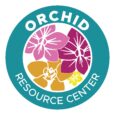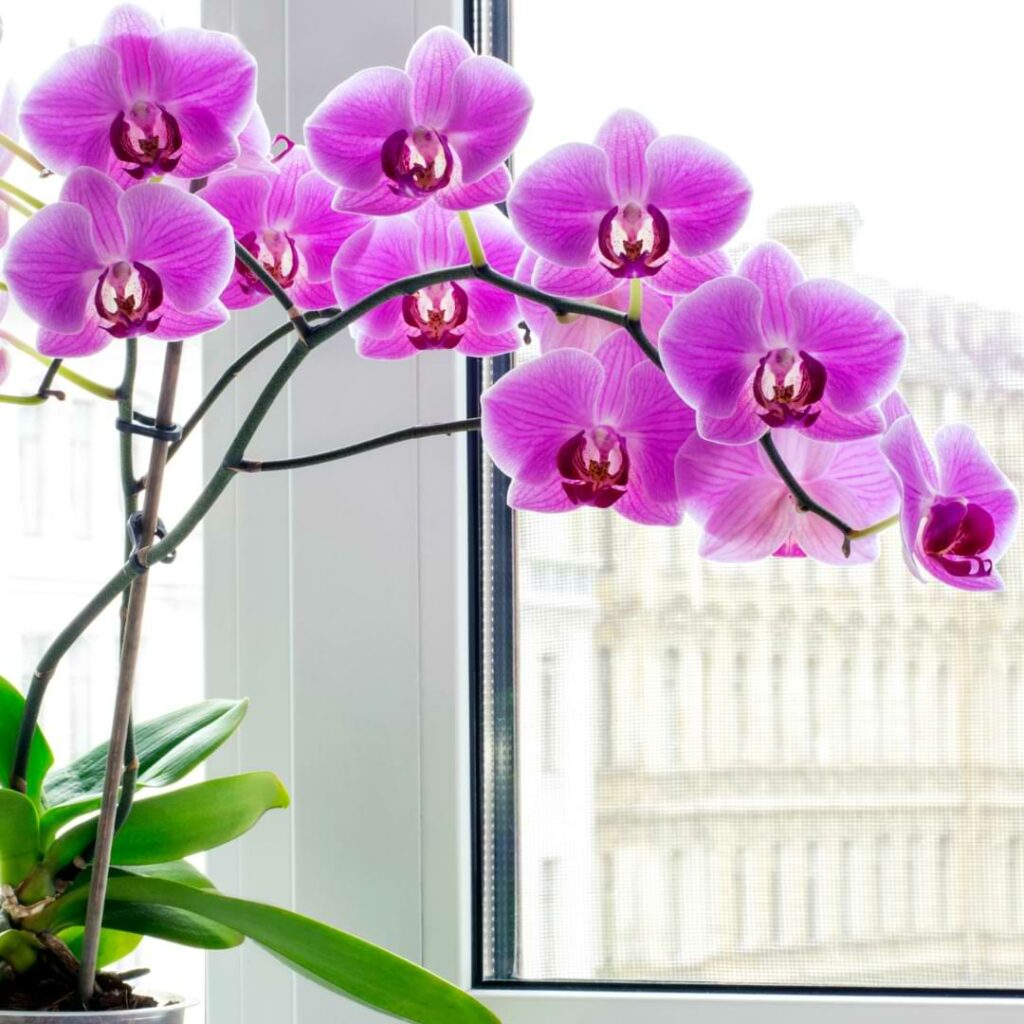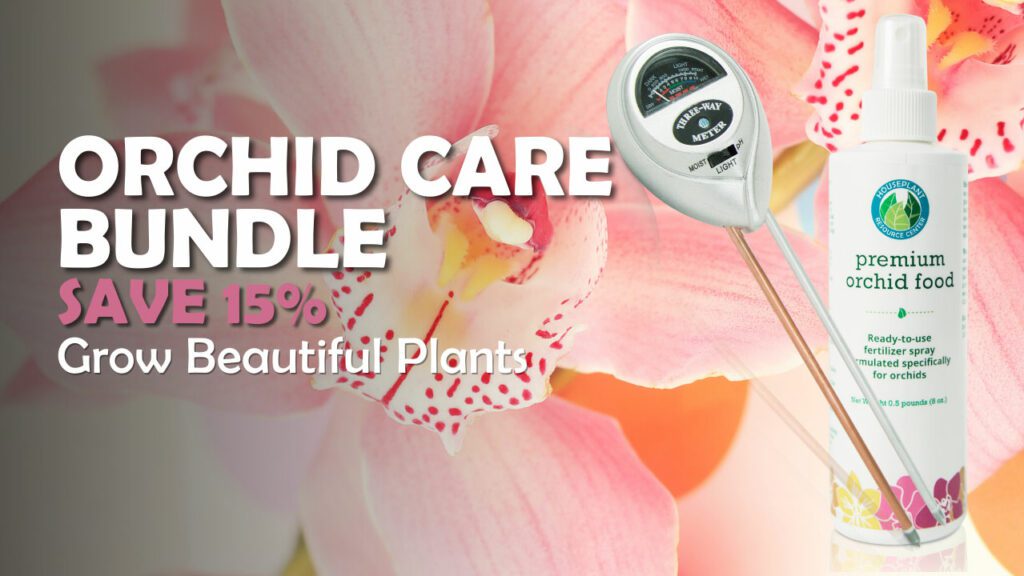For orchid growers, deciding what type of bark to use is an important but often difficult task. There are many different types of bark available on the market, and each has its own set of pros and cons. The two most popular barks for indoor orchid plants are pine bark and fir bark. We will explore the key differences between the two types of bark and discuss which one works best for different orchids.
A quick note: the term “orchid bark” is interchangeable with fir bark and pine bark. It’s not bark from orchids, rather it is bark used for orchids.
What is Pine Bark and Fir Bark for Orchids?
Pine bark and fir bark are both popular substrates for orchids. They are both lightweight and provide good drainage, but there are some key differences between the two.
Pine bark is made from the bark of pine trees and is often sold in bags or pots. It is a popular substrate because it is easy to find and relatively inexpensive. Pine bark also has a high natural pH, which can be beneficial for some orchids.
Fir bark is made from the bark of fir trees and is usually sold in bags or pots. It is less common than pine bark and may be more expensive, and also has a lower natural pH than pine bark, which can be beneficial for some orchids.
When choosing a substrate for your orchid, it is important to consider the specific needs of your plant. Some orchids prefer a higher pH, while others prefer a lower pH. There are also some orchids that do not tolerate pine forests well, so fir may be a better choice for those plants. Ultimately, it is important to experiment and see what works best for your orchid!
Advantages of Using Orchid Bark
Orchid bark has many benefits over other types of potting materials. It is lightweight and well-draining, so it does not compact and suffocate roots. Orchid bark also allows for good air circulation around the roots, which is necessary for healthy growth. Additionally, orchid bark is less likely to harbor harmful bacteria and fungi than other potting materials because it is so well draining. Orchids are already prone to root rot with their delicate root system, so giving them the ideal substrate will ensure they get the water and nutrients they need without risking any rot.

Fir Bark Vs Pine Bark Key Differences
Pine bark and fir bark both have their pros and cons when using them for orchids. Below are some of the key differences between the two that you should consider when deciding what type of orchid bark to use for your beautiful flower.
Ultimately, it’s up to the individual grower to decide which type of bark works best for their orchids. Some growers find that a mix of both pine and fir works well. Experiment and see what gives you the best results!
Origins
Bark has been used for orchids for a long time, as it’s an abundantly available natural resource that works well for this type of plant. Fir bark comes from the popular douglas fir tree and is the most commonly used bark for orchids. Pine bark comes from monterey pine trees, and is slightly more acidic than fir bark, making it only ideal for a certain number of orchids.
Oddly enough, both types of trees are from the same plant family, Pinaceae, but are from a different genus, so they each have their own unique benefits and drawbacks. Now, either can be used for any orchid, but some orchid varieties may prefer pine bark while others may prefer fir bark.
Texture and Appearance
One of the few key differences between pine bark and fir bark is their texture. Fir bark is finer and more uniform in texture, while pine bark is coarser and more irregular. This can affect how well the roots of your orchid can grip the Bark, and how easy it is to re-pot the plant.
In terms of appearance, fir bark tends to be darker, while pine bark is lighter. This difference is mostly cosmetic, but it can be helpful in creating a visually appealing display for your orchids.
There is no exact answer for which bark is best for any orchid. Some growers prefer fir bark because of its finer texture and uniformity, while others find that pine bark provides a better grip for the roots and helps to aerate the potting mix. Ultimately, it’s up to you to experiment and see what works best for your plants.
Most orchid barks are classified as fine grade, medium grade, or coarse grade bark. Below are some of the key characteristics of each.
Medium and Fine Grade Orchid Bark
Fine bark is usually made from fir trees, and is a good option for orchids that prefer a more evenly moist potting mix. This type of bark breaks down more quickly than chunky bark, so it will need to be replaced more often. However, it holds moisture and nutrients better than coarse bark, making it a good choice for plants that require more frequent watering.
Medium grade orchid bark is a good choice for general potting and top dressing, and can be either fir bark or pine bark. For medium grade bark, you’ll still need to decide which of the two types of bark will be better for your orchid. Reserve medium grade bark for orchids that need a happy-medium between fine bark and coarse bark.
Chunky or Coarse Orchid Bark
Chunky or coarse bark is made from pine trees, and is a good option for orchids that like to dry out between watering. This type of bark provides good drainage and aeration for the roots, and also breaks down slowly over time, providing a long-lasting potting mix.
The best way to decide which type of bark to use for your orchid is to experiment and see what works best for your plant. If you’re not sure where to start, ask your local nursery or seek advice from an experienced grower.
Absorbing and Retaining Moisture
Pine bark and fir bark for orchids both absorb and retain moisture, but they have unique properties that make them better suited for different tasks.
Pine bark is more absorbent than fir bark, making it better at soaking up water and preventing dehydration. It also breaks down more slowly, so it can be used as a long-term mulch or potting medium.
Fir bark is less absorbent than pine bark, but it breaks down more quickly. This makes it better for short-term mulching or potting needs. It can also be used as a soil amendment to improve drainage and aeration.
Nutrients
Both pine bark and fir bark have nutrients that are important for your orchid, especially potassium and phosphorus. Pine bark can provide your plant with nitrogen, iron, and magnesium, and fir bark can give your plant iron, copper, and manganese.
As the bark decomposes, it will slowly lose its potency of these nutrients, so to keep your orchid happy, you will need to repot with more bark, or feed your orchid a balanced orchid plant food.
pH Levels
The pH level of a substrate is an important factor to consider when growing orchids. Pine bark and fir bark have different pH levels, which can affect the growth of your orchid.
Pine bark has a pH level of 3.5-5.5, while fir bark has a pH level of 5.0-6.5. Pine bark is more acidic than fir bark, so it will make your orchid’s roots more acidic. Fir bark is more neutral than pine bark, so it won’t affect the roots as much.
Pine bark is a better substrate for orchids that like acidic conditions, such as cattleya and vanda species. Fir bark is a better substrate for orchids that prefer neutral or slightly alkaline conditions, such as phalaenopsis species.
If you’re not sure what conditions your orchid prefers, you can always ask your local nursery or check the internet for more information.
Orchid Bark Uses
Most orchid owners love using bark for their orchids because of how well the plant responds to it, and there is no one way to use your orchid bark.
Either type of orchid bark can not only be used to provide nutrients to your plant, but also to control and prevent root rot by providing extra drainage and aeration to the roots.
To use for extra drainage, pine bark is the best option. The pieces are smaller and more uniform, which allows water to flow through them more easily. Fir bark has a higher absorbency rate and is perfect for orchids who need to be watered more often but are still prone to root rot . It also breaks down more slowly, providing long-term nutrients for the plant.
Orchid bark can also be used as a mulch to top off your already perfect orchid potting soil, as a soil additive to provide more aeration and drainage, or as a side dressing for more sensitive orchids that need the nutrients, but may still be recovering from fertilizer burn, root rot, or some other issue.
Is Pine Bark or Fir Bark Better for Orchids
We’ve discussed the differences between pine bark and fir bark, how they’re both popular organic materials used for orchid potting mixes, and how you can use them other than just to pot your orchid. But which is better? Essentially, neither one is the perfect answer for all orchids.
There are a few key differences between pine bark and fir bark that may make one or the other more suitable for your orchid. Pine bark is finer and less dense than fir bark, making it easier for roots to penetrate. Pine bark is more acidic than fir bark, which can be beneficial for certain types of orchids. And finally, fir bark breaks down more slowly than pine bark, so it lasts longer in the potting mix.
So, which should you use for your orchid? It really depends on your specific plant and what your growing goals are. If you’re looking for an easy-to-penetrate mix that will need to be replaced more frequently, go with pine bark. If you want a slightly acidic mix that will last longer, go with fir bark.
As for the cost, fir bark for orchids is usually the cheaper option. Fir bark is often easier to find in stores since it’s sourced locally and is more readily accessible in most areas, making it the more popular type of orchid potting mix. Pine bark is typically sourced from areas outside of the U.S.
Pine Bark Vs Fir Bark For Orchids Final Thoughts
When determining which type of bark is best for orchids, keep in mind the key differences between pine bark and fir bark. Pine bark is typically more acidic than fir bark, which can be beneficial for certain types of orchids. Fir bark breaks down more slowly, requires less repotting, and is typically less expensive than pine bark.
Ultimately, the best type of bark for your orchid will depend on the specific needs of your plant. Research your orchids specific pH requirements, and if it falls somewhere in the middle, then you should be fine using either fir bark or pine bark. Either way, your orchid will be happy with bark as its well-draining mix because it is going to provide it with the structure and the nutrients it needs to thrive.
If you’re an orchid lover, come join our Facebook community! We can’t wait to celebrate your successes and help you troubleshoot your care routine.
For continued success, you can explore our other articles or visit our online shop for plant care products that are sure to keep your plants boasting rich green leaves and big, bountiful blooms year-round.



